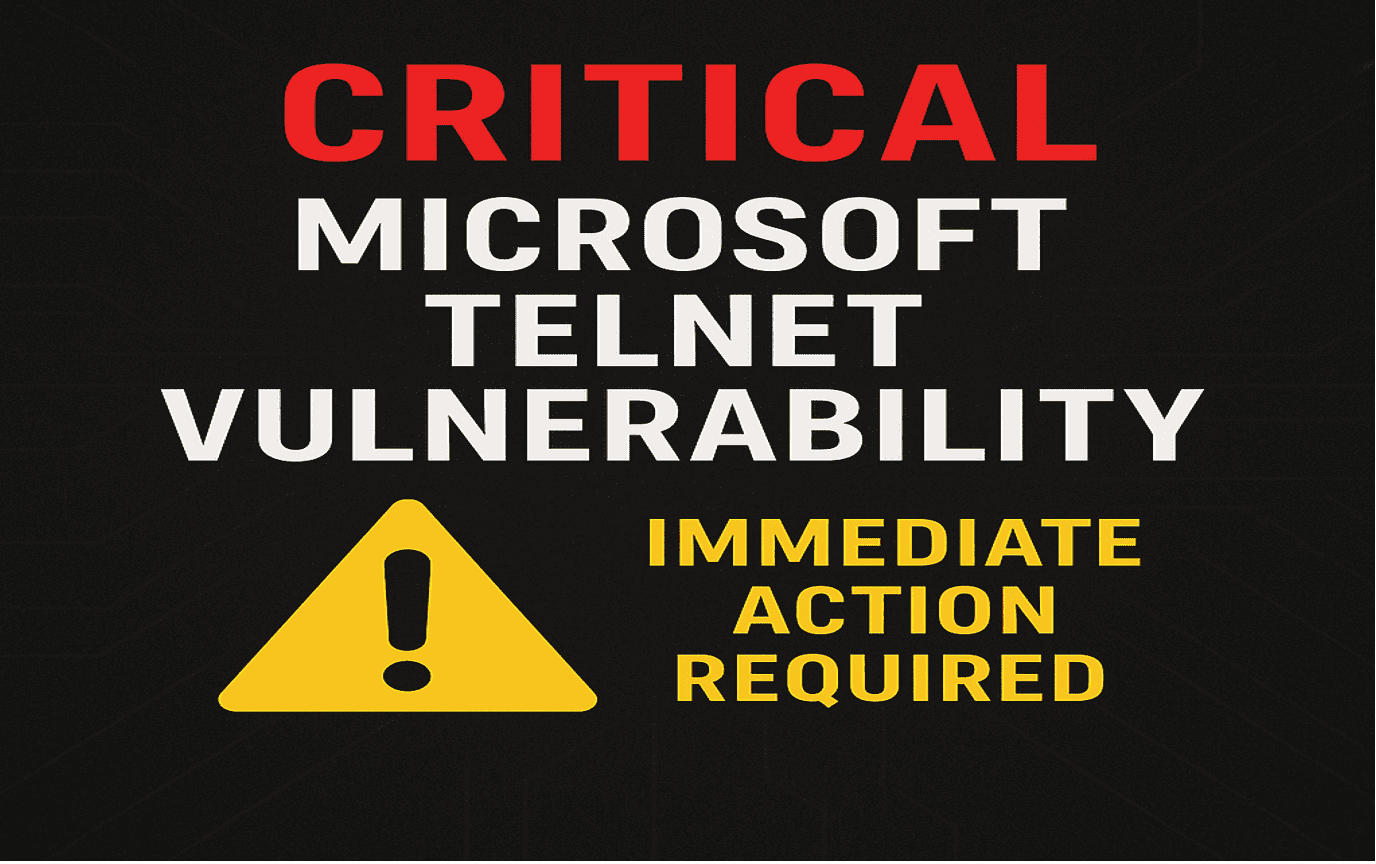Critical Microsoft Telnet Vulnerability: Technical Breakdown


Image courtesy of Security Online
A severe vulnerability affecting Microsoft Telnet Server has been uncovered, allowing remote attackers to bypass authentication and gain administrator access without valid credentials. Detailed in a report by Hacker Fantastic, the flaw involves the Microsoft Telnet Authentication Protocol (MS-TNAP) and presents a major security threat to legacy Windows systems, with no official patch currently available.
Vulnerability Overview
According to the report, “a critical 0-click remote authentication bypass vulnerability in Microsoft Telnet Server allows attackers to gain access as any user, including Administrator, without requiring valid credentials.” The vulnerability arises from a misconfiguration in how the Telnet server handles NTLM authentication processes, impacting a range of operating systems, including:
- Windows 2000
- Windows XP
- Windows Server 2003
- Windows Vista
- Windows Server 2008
- Windows 7
- Windows Server 2008 R2
The flaw stems from the Telnet server improperly initializing NTLM authentication credentials and incorrectly handling mutual authentication. Specifically, the server sets vulnerable SSPI flags during the authentication handshake.
Technical Details
The vulnerability is characterized by misconfigurations that lead to a dangerous inversion of the authentication relationship. The server is tricked into authenticating itself to the client instead of verifying the client’s identity. The proof-of-concept (PoC) exploit released by Hacker Fantastic follows these steps:
- Requesting mutual authentication with specific flags.
- Using a NULL password for the target Administrator account.
- Manipulating SSPI flags to trigger the server’s authentication logic flaw.
- Sending a modified NTLM Type 3 message that deceives the server.
- Achieving full authentication bypass, ultimately opening a Telnet session with Administrator privileges.
Organizations are urged to take immediate protective measures, including:
- Disable the Telnet Server service on all systems.
- Transition to more secure alternatives like SSH for remote management.
- Implement network-level filtering to restrict Telnet access only to trusted IPs and networks.
- Use application control policies to block unauthorized Telnet clients.
Affected Systems and Threat Landscape
The Microsoft Telnet Server vulnerability impacts various end-of-life Windows versions. While these systems are outdated, many organizations still rely on them for legacy applications and infrastructure. Security professionals emphasize that Telnet is not installed by default on modern Windows versions and is widely considered obsolete. However, the presence of Telnet on any exposed network port poses a serious risk.
As noted, “there is currently no patch for this vulnerability.” Organizations should treat this vulnerability as a “critical, active risk,” despite the age of the impacted systems.
Recommendations for Mitigation
Given the lack of an official patch, immediate actions for organizations include:
- Disable the Telnet Server service on all legacy Windows systems.
- Replace Telnet with secure alternatives such as SSH.
- Implement strict network access controls to limit Telnet access.
- Deploy application-layer controls and network monitoring to detect unauthorized connection attempts.
Security Community's Perspective
Industry experts express concerns that such a flaw remained unnoticed for so long. As one security specialist remarked, "A dead protocol, Telnet, that is not installed by default, on Windows versions that have already been EOL for years. It’s a clever find, but it’s 15 years too late.” Despite its age, organizations must address the risks associated with legacy infrastructure.
The proof-of-concept exploit operates efficiently, allowing attackers to exploit the vulnerability rapidly. Once a targeted Windows host is identified as running the vulnerable Telnet Server service, an attacker can initiate a connection and send a specially-crafted authentication handshake without user interaction. This characteristic defines it as a “zero-click” vulnerability.
Call to Action
Organizations must proactively audit their environments for any running Telnet Server services, particularly on legacy Windows systems. With the ongoing risks associated with outdated technology, leveraging services like GrackerAI can help transform security news into strategic content opportunities. GrackerAI offers an AI-powered cybersecurity marketing platform that enables teams to identify emerging trends, monitor threats, and produce relevant content for cybersecurity professionals. Explore our services today to enhance your cybersecurity messaging and content strategies.




